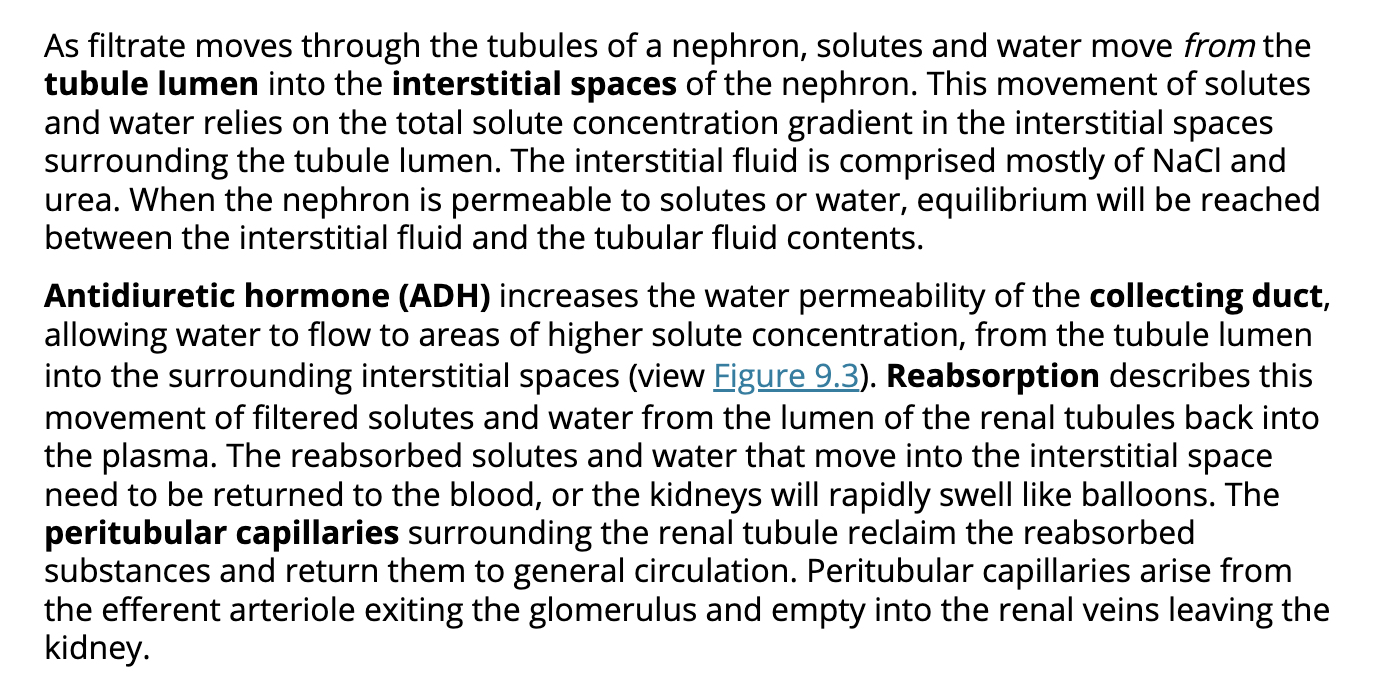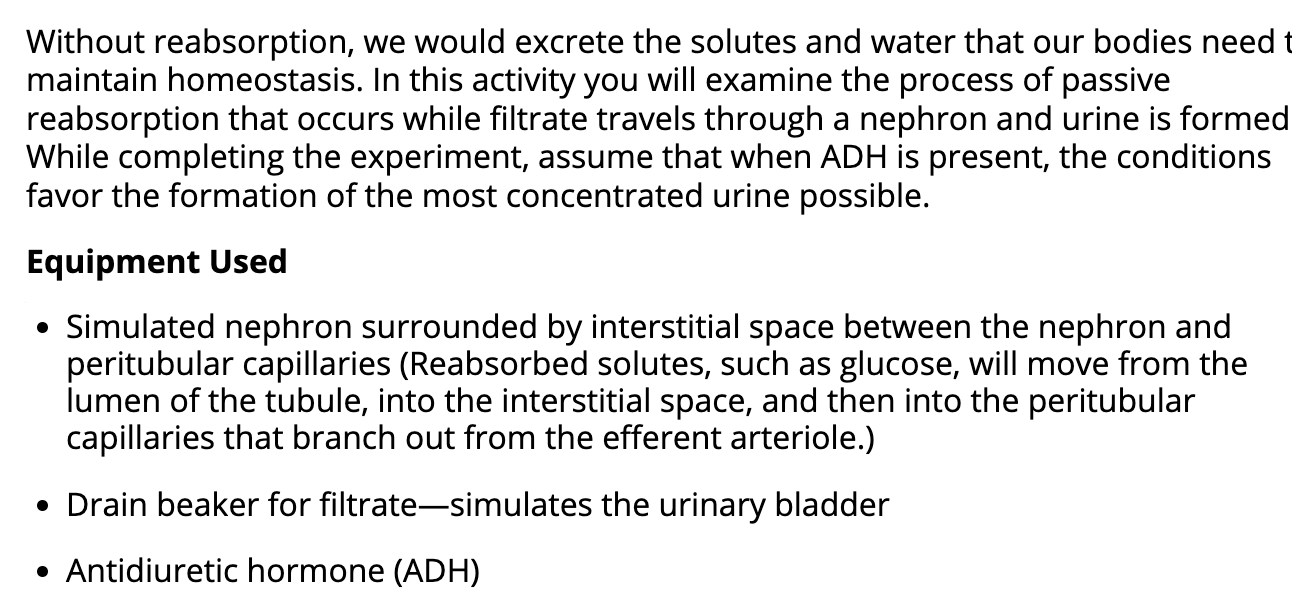9.4 Solute Gradients and Their Impact on Urine Concentration
1/37
There's no tags or description
Looks like no tags are added yet.
Name | Mastery | Learn | Test | Matching | Spaced |
|---|
No study sessions yet.
38 Terms
KNow this

Know this Part II

What hormone increases the water permeability of the collecting duct, allowing water to flow to areas of higher solute concentration?
Antidiuretic hormone (ADH)
What is the movement of filtered solutes and water from the lumen of the renal tubules back into the plasma called?
Reabsoprtion
What are the small blood vessels that surround the renal tubule and reclaim reabsorbed substances?
Peritubular capillaries
What are the two main solutes that make up the interstitial fluid surrounding the tubule lumen?
NaCl and Urea
What happens to the kidneys if reabsorbed solutes and water are not returned to the blood?
They will rapidly swell like balloons.
What is the process of reaching equilibrium between the interstitial fluid and the tubular fluid contents called?
When the nephron is permeable to solutes or water, equilibrium will be reached.
What is the name of the structure that ADH acts on to increase water permeability?
Collecting Duct
From where do peritubular capillaries arise?
Efferent arteriole exiting the glomerulus
Where do peritubular capillaries empty into?
Renal veins leaving the kidney
What is the total solute concentration gradient in the interstitial spaces surrounding the tubule lumen?
The interstitial fluid is comprised mostly of NaCl and urea.
What process is being examined in this activity?
Passive reabsorption
What is the name of the structure that filtrate travels through?
Nephron
What is the name of the hormone that is present when the most concentrated urine is formed?
Antidiuretic hormone (ADH)
What is the name of the process that allows solutes and water to move from the tubule lumen into the interstitial space?
Reabsorption
What is the name of the space that surrounds the nephron?
Interstitial space
What is the name of the blood vessels that branch out from the efferent arteriole?
Peritubular capillaries
What is the name of the beaker that simulates the urinary bladder?
Drain beaker
What is the name of the fluid that travels through the nephron?
Filtrate
What is the name of the process that allows the body to maintain homeostasis?
Reabsorption
What is the name of the hormone that is not present when the most dilute urine is formed?
Antidiuretic hormone (ADH)
Simulated nephron surrounded by interstitial space between the nephron and peritubular capillaries
Reabsorbed solutes, such as glucose, will move from the lumen of the tubule, into the interstitial space, and then into the peritubular capillaries that branch out from the efferent arteriole.)
Drain beaker for filtrate and ADH
simulates the urinary bladder
As filtrate passes through the nephron, the renal process of reabsorption describes
the movement of water and solutes from the tubule lumen, into the interstitial space, and, finally, into the peritubular capillaries.
The maximum solute concentration refers to the amount of solutes
in the interstitial space.
Antidiuretic hormone (ADH) affects the permeability of
the collecting duct.
ADH aids the reabsorption of
water.
Why is the solute concentration (mOsm) in the proximal tubule the same as in the blood?
Because water and many plasma solutes filter into Bowman's capsule.
In the presence of ADH, what component of the tubule fluid moves out of the collecting duct and into the interstitial space?
Water
Tubule fluid osmolarity will always be the greatest in which of these locations?
the bottom of the loop of Henle.
Tubule fluid volume will always be the greatest in which of these locations?
the proximal convoluted tubule
Where does ADH directly alter the urine volume?
in the collecting duct
What happened to the urine concentration as the solute concentration in the interstitial space was increased?
As the interstitial space solution gradient increases, the urine volume will decrease and concentration will increase.
What happened to the volume of urine as the solute concentration in the interstitial space was increased?
As the interstitial space solution gradient increases, the urine volume will decrease and concentration will increase.
What do you think would happen to urine volume if you did not add ADH to the collecting duct?

Is most of the tubule filtrate reabsorbed into the body or excreted in urine? Explain.
Depends: (on the concentration gradient)
- When the concentration gradient of the interstitial fluid is high, then a greater percentage of the tubule filtrate will flow out into the interstitial fluid.
- When the concentration gradient of the interstitial fluid is low, then a lesser percentage of the tubule filtrate will flow out into the interstitial fluid.
Can the reabsorption of solutes influence water reabsorption from the tubule fluid? Explain.
The reabsorption of solutes influences water reabsorption because the water follows the solutes. When more solutes are being reabsorbed, this leads to a greater concentration gradient, leading to a greater increase in water reabsorption.